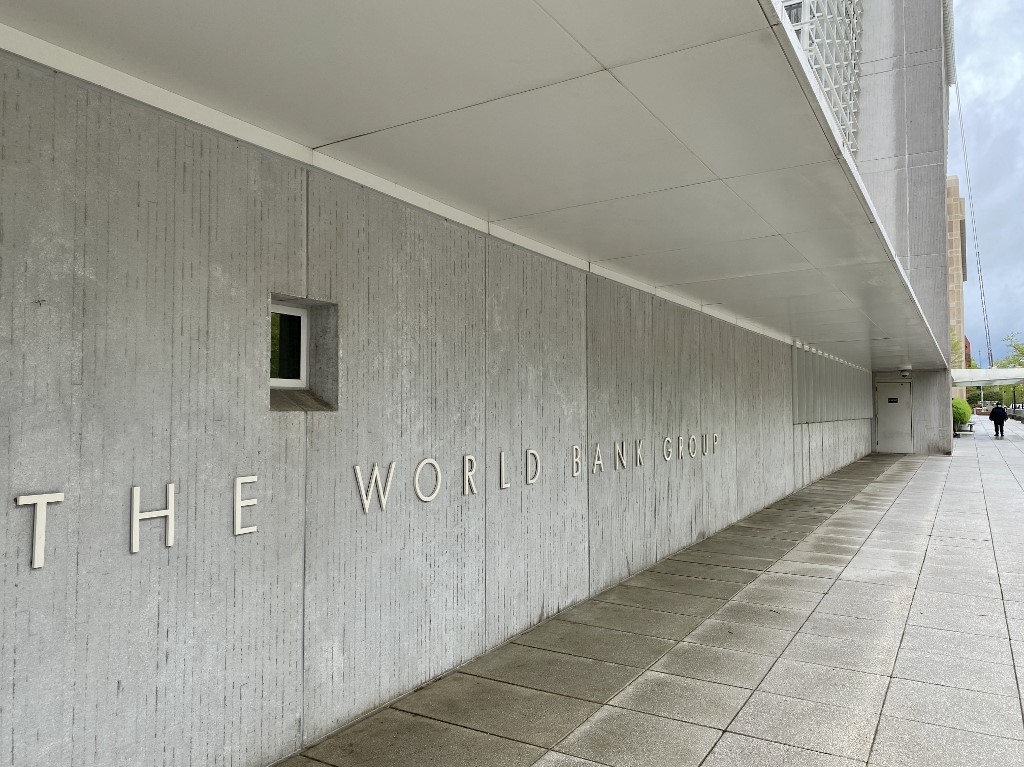Pandemic drives broadest economic collapse in 150 years — World Bank

A security guard is seen at the World Bank Group building on the empty street in Washington, DC on April 13, 2020. (Photo by Daniel SLIM / AFP)
WASHINGTON, United States — The coronavirus pandemic inflicted a “swift and massive shock” that has caused the broadest collapse of the global economy since 1870 despite unprecedented government support, the World Bank said Monday.
The world economy is expected to contract by 5.2 percent this year — the worst recession in 80 years — but the sheer number of countries suffering economic losses means the scale of the downturn is worse than any recession in 150 years, the World Bank said in its latest Global Economic Prospects report.
“This is a deeply sobering outlook, with the crisis likely to leave long-lasting scars and pose major global challenges,” said World Bank Group Vice President for Equitable Growth, Finance and Institutions Ceyla Pazarbasioglu.
The depth of the crisis will drive 70 to 100 million people into extreme poverty — worse than the prior estimate of 60 million, she told reporters.
And while the Washington-based development lender projects a rebound for 2021, there is a risk a second wave of outbreaks could undermine the recovery and turn the economic crisis into a financial one that will see a “wave of defaults.”
Article continues after this advertisementEconomists have been struggling to measure the impact of the crisis they have likened to a global natural disaster, but the sheer size of the impact across so many sectors and countries has made that difficult.
Article continues after this advertisementUnder the worst-case scenario, the global recession could mean a contraction of eight percent, according to the report.
But Pazarbasioglu cautioned: “Given this uncertainty, further downgrades to the outlook are very likely.”
Meanwhile, a group of American economists who are the arbiters of when a recession starts and ends said Monday the United States entered a downturn in February, ending 128 months of uninterrupted growth, the longest streak in history.
Recessions typically are defined by several months of declining economic activity.
But the Business Cycle Dating Committee of the National Bureau of Economic Research (NBER), a non-profit, non-partisan research organization, called the current situation in the world’s largest economy “unprecedented” due to the severity of the drop in employment and production, even if it might turn out to be shorter than other recessions.
China still growing, barely
China is nearly alone in seeing modest growth this year. However the World Bank warned the depth of the slowdown in the world’s second-largest economy will hinder recovery prospects in developing nations, especially commodity exporters.
While China will see GDP rise just one percent, the World Bank said, the rest of the forecasts are grim: US -6.1 percent, eurozone -9.1 percent, Japan -6.1 percent, Brazil -8 percent, Mexico -7.5 percent and India -3.2 percent.
And things could get worse, meaning the forecasts will be revised even lower, the bank warned.
Though dramatic, the current forecast falls short of the Great Depression, which saw a global contraction of 14.5 percent from 1930 to 1932, while the post-war downturn in 1945-1946 was 13.8 percent, according to the World Bank.
But because of the pandemic there remain some “exceptionally high” risks to the outlook, particularly if the disease lingers and authorities have to reimpose restrictions — which could make the downturn as bad as eight percent.
“Disruptions to activity would weaken businesses’ ability to remain in operation and service their debt,” the report cautioned.
That, in turn, could raise interest rates for higher-risk borrowers. “With debt levels already at historic highs, this could lead to cascading defaults and financial crises across many economies,” it said.
But even if the 4.2 percent global recovery projected for 2021 materializes, “in many countries, deep recessions triggered by COVID-19 will likely weigh on potential output for years to come.”